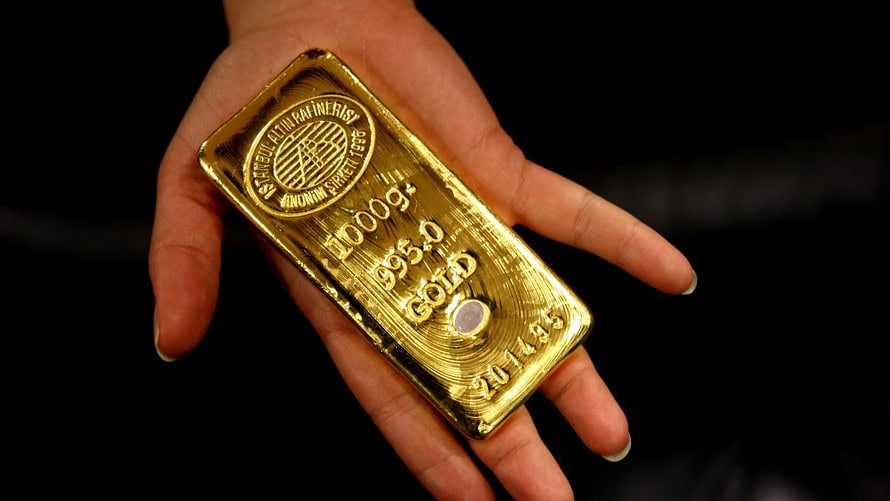
Gold futures retreated Monday, sending prices to their lowest finish in more than a week as Treasury yields remained elevated and a leading dollar index firmed.
“Gold’s weakness is not just due to the stronger dollar, but the rising yields, too,” said Fawad Razaqzada, technical analyst at Forex.com. “Together, these factors are proving to be a toxic mix for the noninterest-bearing and buck-denominated commodity.”
“Unless at least one of these influences are not put right, gold will struggle to sustain any rally,” he told MarketWatch in emailed comments. “In the short term, the path of least resistance would remain to the south so long as that $1,205-15 resistance area remains intact.”
December gold GCZ8, +0.38% fell $17, or 1.4%, to settle at $1,188.60 an ounce, its lowest finish since Sept. 27. Despite its wavering price action over recent sessions, Friday’s gain was enough to hand the metal a roughly 0.8% advance for last week, according to FactSet data.
Gold’s sister metal December silver SIZ8, +0.74% dropped by 32 cents, or 2.2%, to $14.329 an ounce Monday, after a weekly loss of about 0.4%.
“The crash in Chinese stock markets has added to the fall in gold prices,” said Chintan Karnani, chief market analyst at Insignia Consultants. Stocks in China, which is among the biggest buyers of gold, saw broad weakness Monday.
Still, from a technical perspective, Karnani pointed out that gold has managed to trade over $1,181, “which is a positive sign. If gold manages to trade over $1,181 till tomorrow, then chances of $1,214.80 will be very high.”
On Monday, the ICE U.S. dollar index DXY, +0.14% rose 0.1% to 95.762; it was up roughly 0.6% last week and remains nearly 4% higher this year so far, contributing to a roughly 9% drop for gold over the same stretch.
The 10-year Treasury note yield TMUBMUSD10Y, +0.59% ended last week near 3.23%, off last week’s steepest levels but still hovering near multiyear highs. U.S. bond markets were closed Monday for the Columbus Day holiday.
Because precious metals — usually used as a haven by investors — don’t offer a yield, the commodity is vulnerable to a slump in a rising-rate environment. That climate also tends to lift the dollar, in which gold is primarily priced. The Federal Reserve has already increased rates three times in 2018 and is expected to lift benchmark rates a fourth time in December, moves which can drive risk-free Treasury yields higher and undercut appetite for the yellow metal by comparison.
Gold’s negative reaction to higher yields from a competing asset could reach a tipping point, however, some analysts note, meaning that eventual fears that high rates could sink stocks or the economy could revive interest in the hedging asset.
“The dollar strength is clearly a key factor on the price of gold still, with the negative correlation at play. However, with Treasury yields blowing higher, there is an added market fear factor that means that gold gets a degree of safe haven bid as well. This may help to restrict a gold selloff,” said Richard Perry, market analyst at Hantec.
Investors were also watching developments in Europe, with the EU signaling in a letter Friday to Italy’s economic minister, Giovanni Tria, that Italy’s budget targets are a source of concern for the trading bloc, setting up a potential market-disrupting clash, which can offer underlying support to haven gold.
